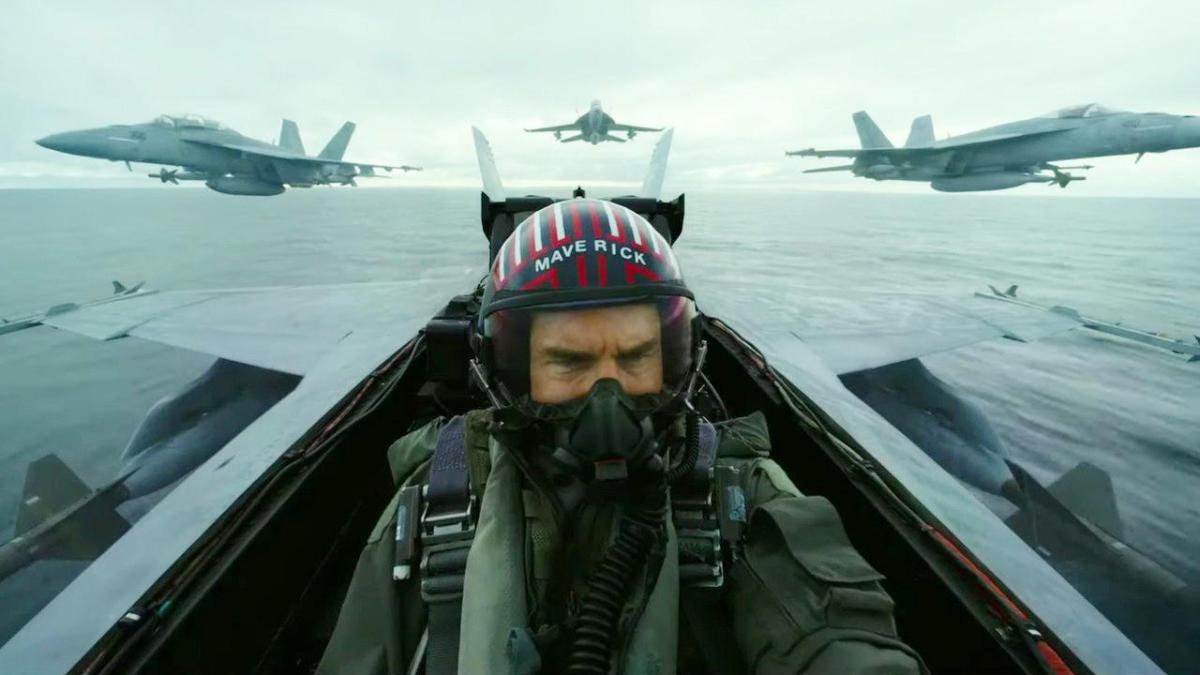Earlier this week, a Letterboxd review went viral on Twitter after a user screen-shared an over-700-word post that gave Top Gun: Maverick 1/2 of a star (out of five). Even before reading it, I knew it was going to be either a long joke or blasting the movie’s role as propaganda for the imperialist U.S. military. While the movie’s gotten good reviews (all I see is the word “fun” tossed around a lot), what little criticism I have seen has noted the nameless, unidentifiable threat they are fighting in the movie—just America vs. … not-America. Got it. Needless to say, the Letterboxd critique from Brett talked about the latter.
Much of the replies (that are not outright bigotry, boiled down) amount to “chill, it’s just a movie.” This is despite a lot of people acknowledging that storytelling through cinema as something that can be affirming or threatening (either way, powerful). However, when you don’t want to acknowledge something that makes you feel uncomfortable … there’s always the timeless “dude, relax.”
On Memorial Day, Media Matters and Vanity Fair, among others, wrote about the open embrace of this film as jingoistic among conservative commentators and cultural critics. From supposedly center-right people like Megan McCain to bad-take factory Ben Shapiro, the culture war grifters echoed the same praise similar to how they echo the same complaints about something being “woke.”
Brett’s whole review is worth reading, but this part right here sums up their feelings very clearly:
Top Gun: Maverick is a 131-minute long advertisement for death. Aggressively unoriginal, wildly irresponsible with its messaging, historically revisionist, and shamelessly jingoistic in the name of providing fellatio to arms dealers. This is a masterwork of propaganda in defense of some of our nation’s worst traits, and it’s an enormous success.
An advertisement for arms dealers
Something that’s been overlooked in the discussion of Brett’s review is his mention that the film was also a way to rally support and get free product placement for X-planes (experimental aircraft). Top Gun: Maverick partner and weapons maker Lockheed Martin said as much on a special landing page for Top Gun: Maverick(emphasis mine):
Lockheed Martin Skunk Works® thrives on tackling seemingly impossible work, developing technologies for tomorrow’s challenges before the need is even identified.
From creating radar evading stealth capabilities to X-planes that redefine the sonic boom to many revolutionary technologies in between, Skunk Works has a long tradition of quickly developing enduring innovation for when it’s needed most.
When the Top Gun: Maverick team was looking to push the envelope and stand true to Maverick’s Need for Speed, Skunk Works was their first call. With the Skunk Works expertise in developing the fastest known aircraft combined with a passion and energy for defining the future of aerospace, Darkstar’s capabilities could be more than mere fiction. They could be reality…
In addition to a landing page, there’s a series of videos that, while they may be interesting from a filmmaking perspective, are also just another to justify product placement of weapons designed to kill people and flatten areas people call homes.
Military PR and recruitment
In addition to the partnership with Lockheed Martin, it was also Paramount Pictures’ time to shine in yet another partnership with the Department of Defense (DoD). They included equipment, personnel, and script oversight as part of the deal. This is standard now. In 2005 (just a few years into the “War on Terror”), an opinion from the U.S. Naval Institute argued a need for another Top Gun and cited the boost in recruitment after the first movie came out in 1986. (Ironically, 1986 was the period of the Iran-Contra Affair in which the U.S. was arming future al-Queda—which was a very 2005 problem.)
I don’t say “yet another” to say it’s Paramount exclusively. Most (if not all) major studios participate in these partnerships to help with production costs. The longstanding relationship between entertainment (this includes literature and geeky conventions) and the military extends to the beginning of cinema.
Not only was the first major film (Birth of a Nation) glorifying the Confederate Army, heavily promoted by the federal government (including SCOTUS), and the first film shown at the White House. The first film to win an Oscar (Wings) was made with the Department of War (what would later become the Department of “Defense” in name alone). The film was pre-Hays Code, so it was able to take liberties in some scenes (like nudity and a gay couple) but still had active military oversight to boost interest in military aviation.
So, is Top Gun: Maverick military propaganda? It’d be hard to argue otherwise, but that has never stopped anyone from trying before.
(via Twitter, featured image: Paramount Pictures)
—The Mary Sue has a strict comment policy that forbids, but is not limited to, personal insults toward anyone, hate speech, and trolling.—










Published: Jun 17, 2022 7:28 PM UTC